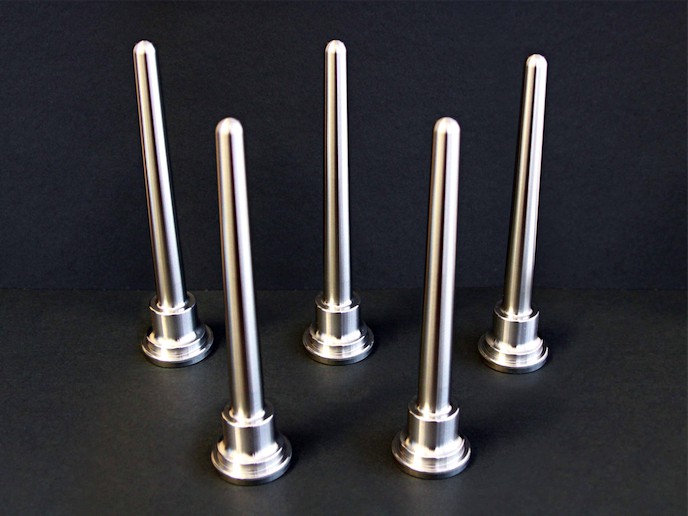Novel manipulation of silicon carbide-based powder creates stronger, greener thermal spray
Silicon carbide’s (SiC) extreme hardness, low friction coefficient, and minimal density make it a highly attractive coating solution for a range of applications used by the petrochemical and chemical industries. The challenge, however, is that when heated, SiC becomes a gas and thus cannot be applied as a thermal spray. That is until now. The EU-funded ThermaSiC project is set to disrupt the thermal spray market by developing the first SiC-based thermal spray coatings. “Our innovative wear-resistant material for coatings is based on silicon carbide, which is well-known for its ability to withstand all sorts of wear, corrosion, and high temperatures,” says project coordinator Mr Gisle Østereng. “ThermaSiC is also a greener material than such competing materials as tungsten carbide, cobalt, and chrome and is sourced from conflict-free zones.” A superior powder product Seram Coatings, the project’s lead partner, has long produced a SiC-based powder. The innovative powder contains an oxide layer around each SiC particle that enables the SiC to go through the thermal spray process and form a coating. In this project, Seram worked to demonstrate the effectiveness of ThermaSiC, a new powder product for thermal spray coating offering superior wear resistance, decreased weight and emissions, and an increased lifespan for the coated parts. “Thermal spray is the most efficient and desired coating method for wear coatings in the industry,” says Østereng. “ThermaSiC can be used by thermal spray guns to form coatings that have a lower cost than if they were made using traditional vacuum chamber methods such as CVD and PVD.” The project also worked to scale up Seram’s manufacturing capabilities and finalise its Intellectual Property (IP), marketing, and sales strategy. Some of the project’s key achievements include a successful scale-up of production, moving production to Norway’s largest industrial site, gaining a positive characterisation of the powder and coatings, and finalising a study of the market and value chain. The technology readiness of ThermaSiC was elevated by performing several internal tests, as well as with spray partners and independent third parties. In March 2018, the first very dense coatings were completed using the TopGun HVOF thermal spray system. That being said, due to some unexpected complications with the other project partners, researchers were unable to prove ThermaSiC as a stand-alone product, but instead as a part of a blend of materials. “We are now commercialising the blend applications and are turning our attention towards proving the product as a stand-alone solution for other applications,” explains Østereng. On the verge of disruption Despite this delay, Østereng is confident that ThermaSiC is on the verge of disrupting the thermal spray material market by providing a stronger, cost efficient, and sustainable solution. “ThermaSiC provides superior coating performance in corrosive and abrasive environments, as well as at high temperatures – up to 1 500 °C in air,” he says. “As SiC is one of the world’s hardest synthetic materials and possesses lower density than other coating options, ThermaSiC gives applications a longer lifespan, lower maintenance costs, and a sustainably-competitive advantage.”
Keywords
ThermaSiC, silicon carbide, SiC, thermal spray, coating, Seram Coatings







